Bay Nui
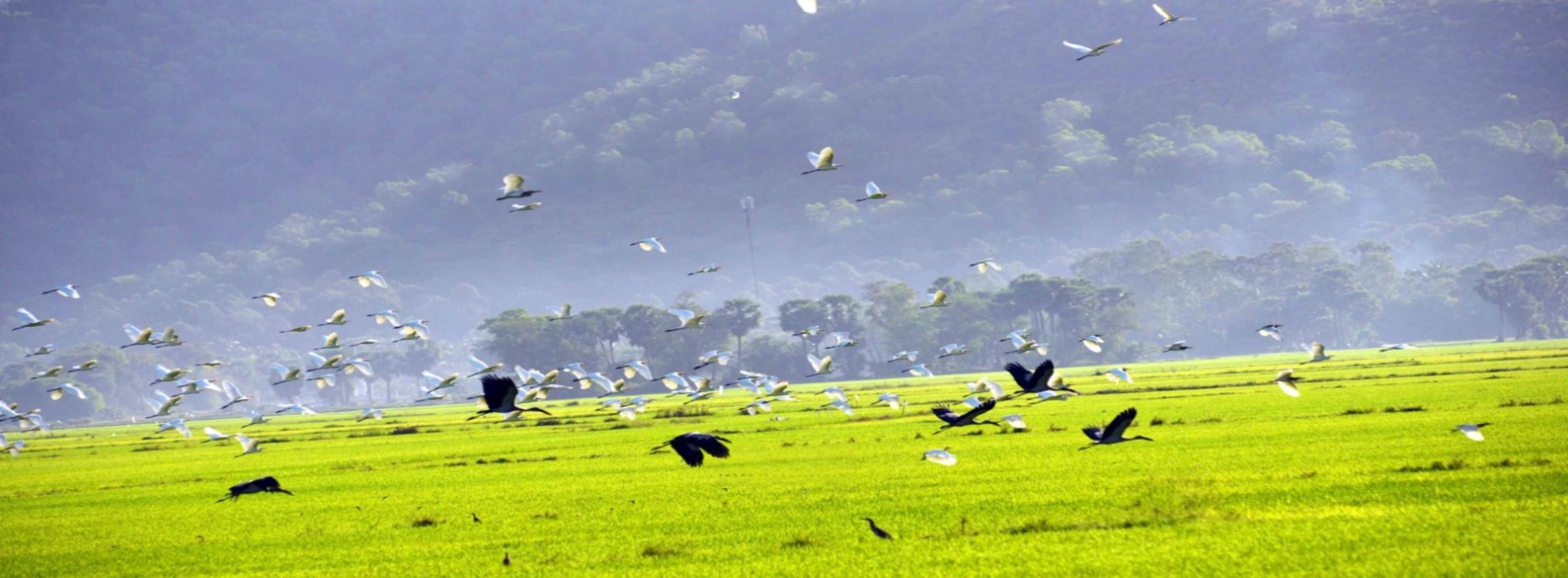
If you think the Mekong Delta is all about flat plains, think again. Bay Nui is a strikingly different mountainous region in this area. Commonly known by its Sino-Vietnamese name That Son, it consists of seven distinct mountains scattered across An Giang Province.
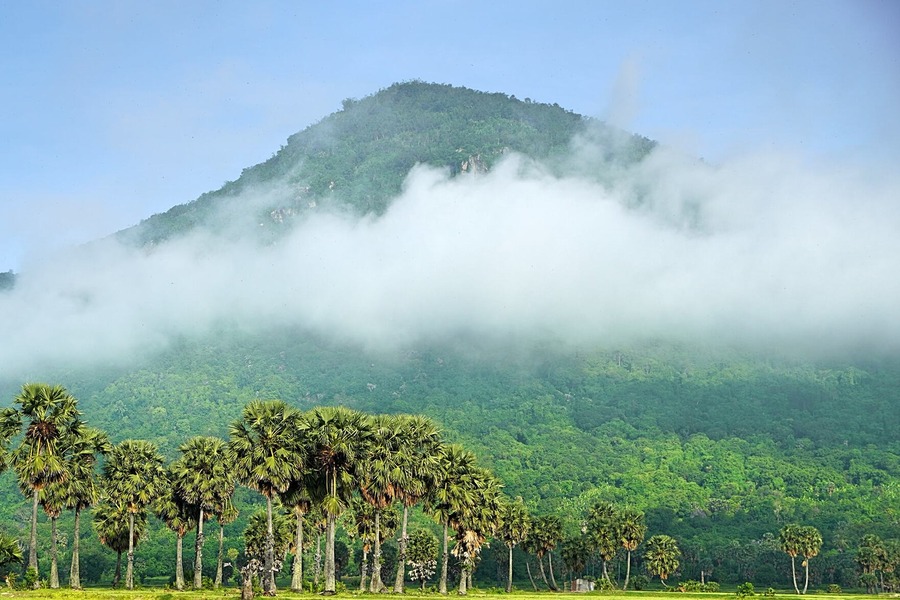
A view of one mountain of Bay Nui. Photo: Tapchidulich
Beyond its breathtaking natural scenery, Bay Nui is also considered a sacred land, believed by locals to be the spiritual guardian of the region. Let Asia King Travel take you on a journey to uncover its secrets in the article below.
Bay Nui is located in the northern part of An Giang Province, near the border between Vietnam and Cambodia. While the area is home to around 40 mountains, only seven are considered sacred, which is how it got its name. The average height of the mountains is around 700 meters, making them suitable for trekking trips that aren't too strenuous.
This destination is about 250 kilometers west of Ho Chi Minh City, but the journey can be quite time-consuming. A more convenient option is to fly to Can Tho City, which cuts the travel distance in half.
From Can Tho International Airport, take Le Hong Phong Street and then Ton Duc Thang Street to reach National Highway 91. Follow Highway 91 westward, then continue onto Provincial Road 491. This route will lead you to Tri Ton Town, which is close to the Bay Nui sightseeing area.
Suggested for you: Southern Vietnam Cycling Tour 5 days: Saigon & Mekong Delta
The weather in An Giang is generally pleasant year-round, with little chance of sudden rain or natural disasters. That means you can visit Bay Nui at any time of the year. Asia King Travel recommends coming in early spring, when flowers and plants are in full bloom to welcome the new year, or between August and October, when vibrant Khmer festivals take place with plenty of lively cultural activities.
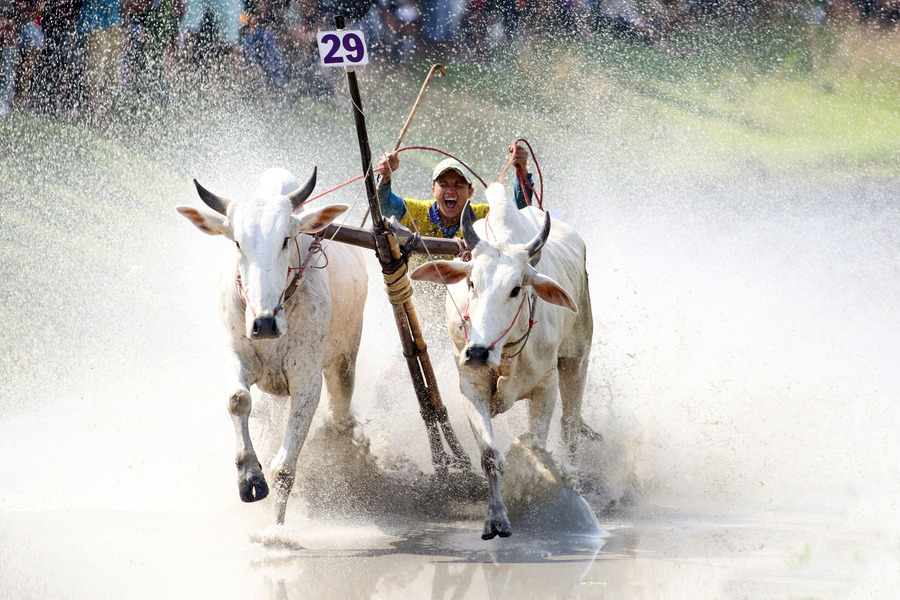
Bay Nui Ox Racing Festival is the most exciting event during the annual Sene Dolta Festival held every September. Photo: Kinh doanh va phat trien
Cam Mountain is the highest and also the most sacred among the seven mountains. According to many legends, it is believed to be a holy place of the Buddha, where building houses is forbidden as it would defile the sacred land.
Cam Mountain is one of the most popular tourist destinations in An Giang Province due to its majestic appearance, cool climate, beautiful scenery, and lush greenery. To reach the summit, you can take a cable car, hike, or rent a shuttle vehicle. For those who love the thrill of conquering nature, hiking up the forested stone steps is the best way to slowly take in the mountain’s stunning beauty.
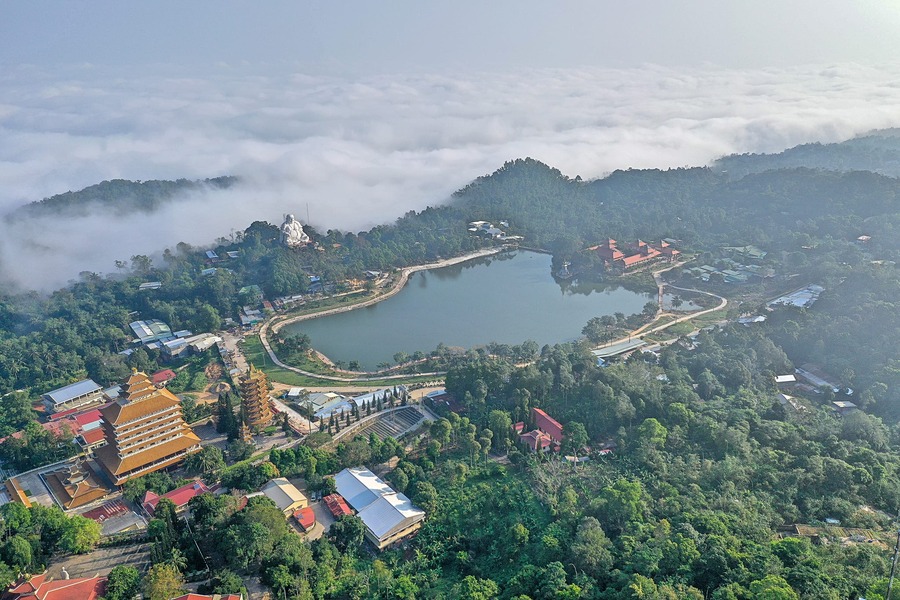
Cam Mountain is the most famous spiritual tourism destination in the Bay Nui region. Photo: Sai Gon TiepThi
At the top, you'll find several notable attractions such as Van Linh Pagoda, Thuy Liem Cave, Vo Bo Hong Peak, Big Buddha Pagoda, and Thanh Long Water Park. Most impressively, the mountain is home to the tallest Maitreya Buddha statue in Asia, standing at 33.6 meters.
Phoenix Mountain is the second highest among the seven. According to legend, in ancient times, phoenixes often visited its peak, which is how the mountain got its name. It is considered to have the most beautiful scenery of all. Located in a semi-mountainous region, it has a unique geological structure, with an underground cave system inside that resembles a giant beehive. On the eastern slope of Phoenix Mountain, Soai So Lake boasts a pristine beauty, with its water always clear, emerald green, and calm.
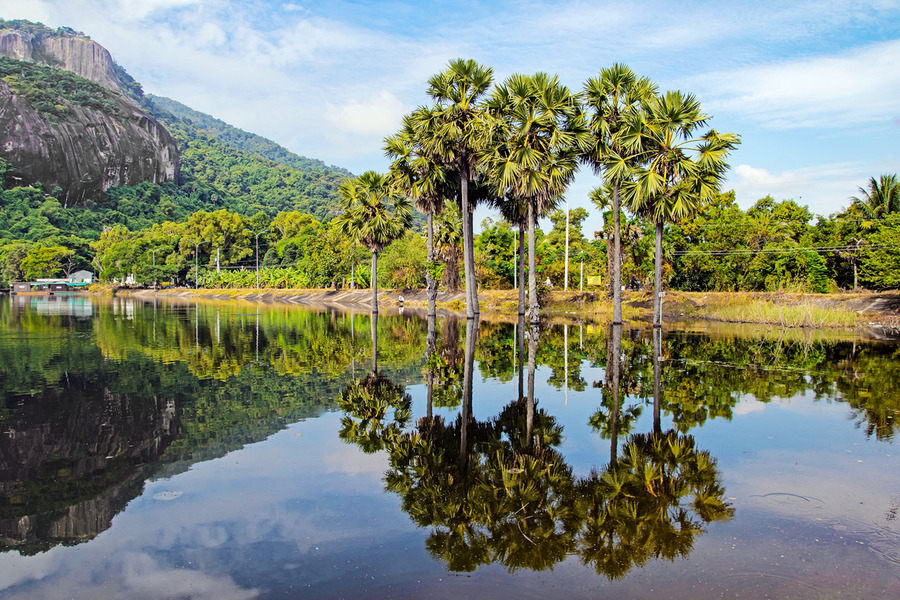
The beauty of Soai So Lake on Phoenix Mountain. Photo: thuydaonguyen / Mien Tay Co Gi
Ngoa Long Mountain stretches about 8 kilometers and is shaped like a dragon lying down. The mountain is home to rare and valuable woods and cinnamon. It also serves as a habitat for many species of wildlife and birds. Additionally, the area features numerous orchards and hillside farms cultivated by local residents.
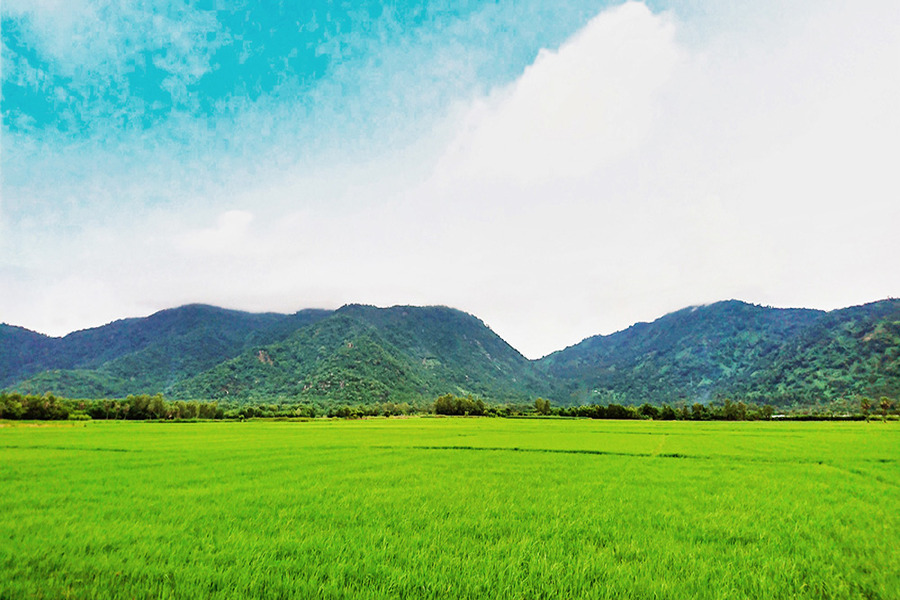
The mountain stretches across a large area. Photo: Sai Gon Tiep Thi
However, the mountain’s most remarkable historical significance lies in O Ta Soc revolutionary base during the Vietnam War. From this strategic stronghold, the An Giang Provincial Party Committee directed local forces and civilians in repelling various bandit groups and resisting multiple raids by the Army of South Vietnam.
Ngu Ho Mountain is the fourth highest among the seven. Its name comes from the five deep, well-like depressions found on the mountain. Although it’s not so tall, the terrain is quite rugged, with large rocks scattered throughout. Despite the challenging landscape, the mountain is home to beautiful scenery and fruit-laden orchards that thrive year-round. The rocks found here are also a valuable resource used in construction.

Traces of the five water wells. Photo: Bao An Giang
On this mountain, there is a rock formation that closely resembles the shape of an elephant. Although it is one of the lowest peaks among the Bay Nui range, standing at just 145 meters, yet it features several underground caves.
A tragic historical event took place here: the Ba Chuc Massacre in 1978, when Khmer Rouge forces invaded the town of Ba Chuc. Many locals fled to Elephant Mountain to hide, but they could not escape the violence. A total of 3,157 civilians were brutally killed. You can visit the Ba Chuc Memorial House at the foot of the mountain to pay tribute to the victims.
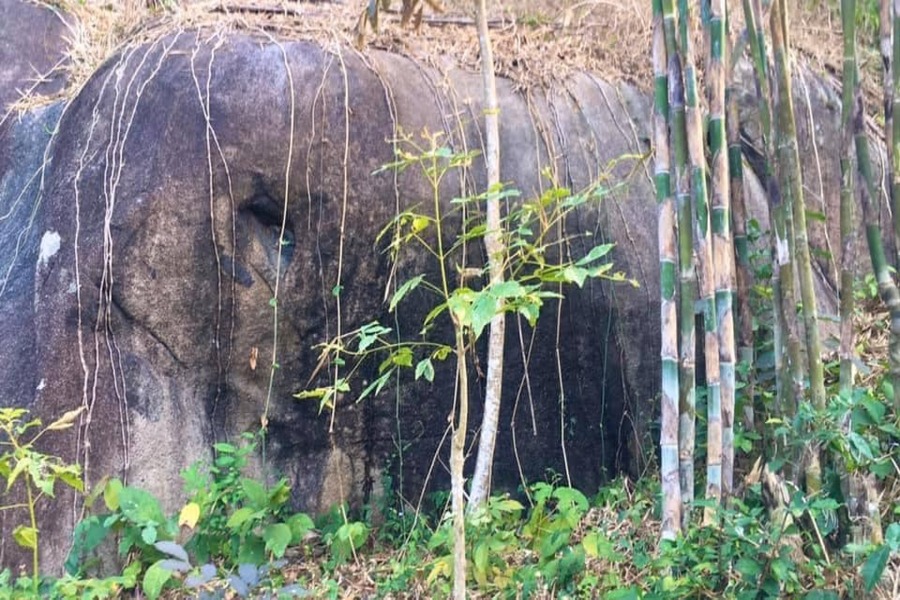
The rock looks very much like an elephant. Photo: Lang Thang An Giang
The most unique feature of this mountain is a rock on its western slope that has a distinctive shape resembling a parrot, you can easily make out its head and beak just by looking at it. The path leading up to the rock has been built with stone steps and includes a safety handrail. The mountain has also been designated as a tourism site, offering scenic viewpoints and visits to many religious structures.
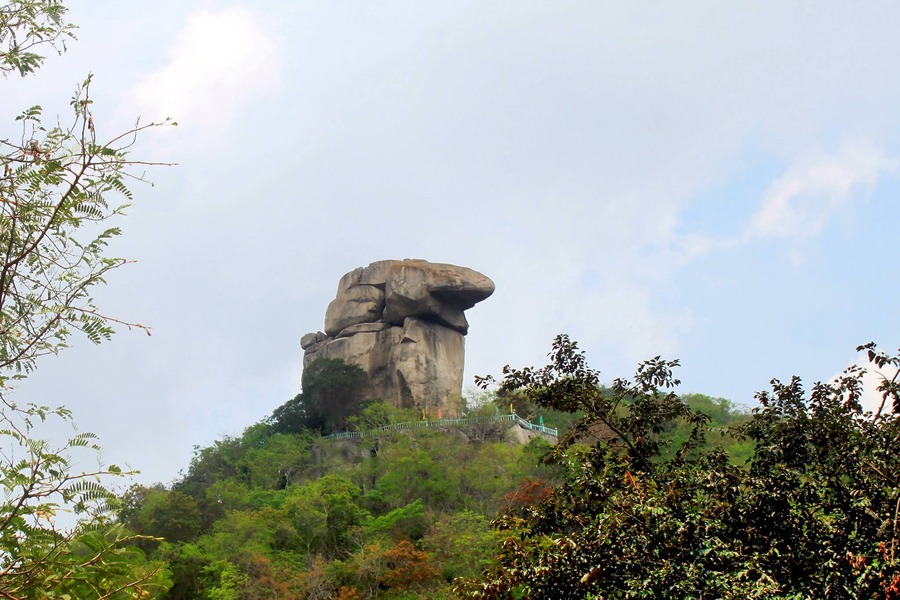
And here is the parrot-shaped rock. Photo: Lang thang An Giang
Water Mountain is the smallest among the seven sacred peaks, standing at just 54 meters tall. It's more like a hill than a mountain. Despite its modest height, it is still considered one of the seven sacred mountains due to mystical beliefs in local folklore. It was once thought to be a place where spiritual energy gathered, helping early settlers establish and expand the land.
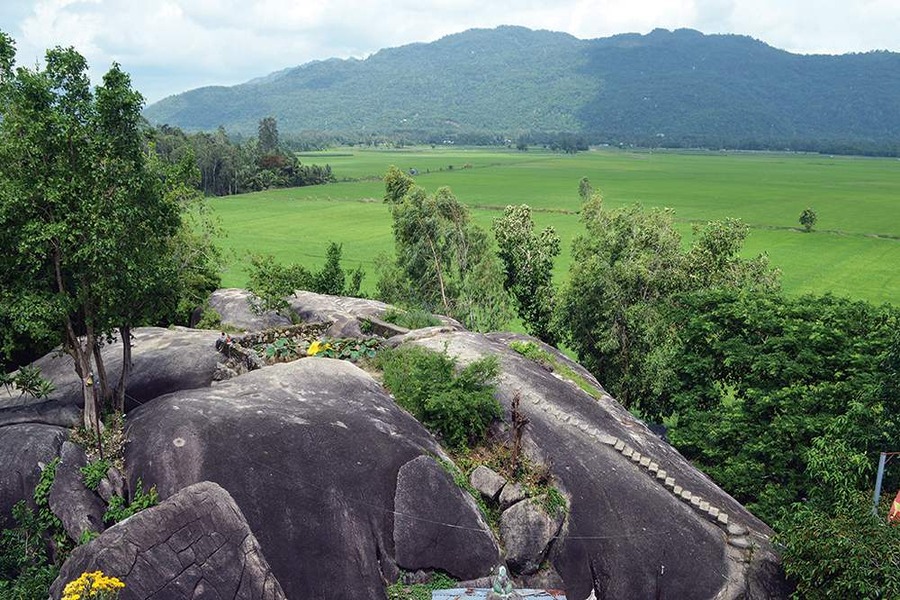
Water Mountain's scenery is incredibly poetic and charming. Photo: MIA
In the past, before flood-control dikes were built, the mountain would be surrounded by vast floodwaters during the rainy season, which is how it got the name. The mountain also features a few small caves, some temples, and remnants of an old defensive wall.
Bay Nui is considered the spiritual heart of both the land and people of An Giang. On top of that, it boasts stunning natural landscapes. A visit to this region will surely make you fall even more in love with it. Get in touch with Asia King Travel to start planning your trip today!
Suggested for you: Mekong Delta Tour 3 days: Mekong Delta Eco Excursion